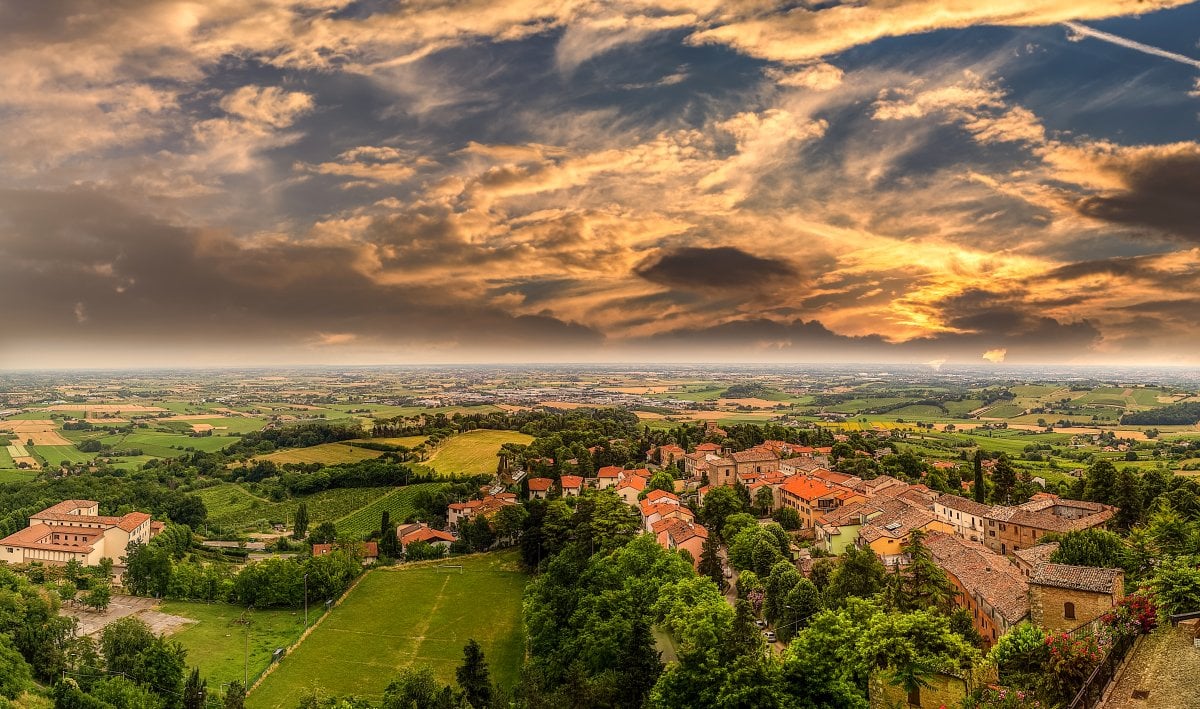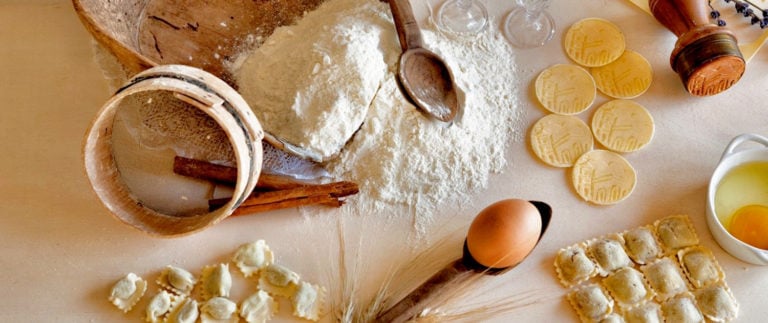Bertinoro (Forlì/Cesena) | Photo @ borgando.it
In the province of Forlì, Bertinoro is a town famous for good wine and rolling hills that enhance the surrounding landscape.
This medieval town stands on a small hill covered with vineyards, from which it is possible to enjoy a magnificent view of the plain below, until reaching the Adriatic Sea on the horizon.
For this reason Bertinoro is nicknamed “the Balcony of Romagna”, as well as being known as “City of Wine and Hospitality”.
Bertinoro also belongs to the Borghi Autentici d’Italia (Authentic villages of Italy) and the Most Beautiful Villages in Italy Associations.
History
There are two competing stories about where the name came from.
On tasting a local wine from a plain cup, Emperor Theodosius’ daughter, Galla Placidia, said “Oh wine, this crude goblet is not worthy; I would drink you from a cup of gold” (berti in oro, in Italian).
According to an other theory, the name Bertinoro derives from the Latin britannorum, to remember the British monks who lived here in the distant past.
The town has rejoiced in its splendid castle, the defensive fortification that looms over the entire valley, since the Middle Ages, when Bertinoro deferred to the city of Ravenna. The Holy Roman Emperor controlled it from 1177 until Italian unification in 1861.
What to see

Bertinoro (Forlì/Cesena) Town Hall | Foto @ Anneaux, via Wiki Love Monuments 2015
The small village of Bertinoro has several interesting locations to visit, starting with its beautiful fortress built around the start of the second millennium. In 1302, it hosted Dante Alighieri, as Carducci recalls in his ode “The Church of Polenta”.
The town’s medieval hub is Palazzo Ordelaffi, a municipal building with two halls, the Sala del Popolo and the Sala della Fama, dating from 1306. The cathedral church of St Catherine of Alexandria, the town’s patron saint, has three aisles and is in bramantesque style.
One of the main monuments is the Colonna delle Anella (the ringed column or the Column of Hospitality), next to the town hall. It was built at the behest of Guido del Duca and Arrigo Mainardi, in a bid to end the constant clashes between the warring noble families. The column had 12 rings, one for each family. When a pilgrim came to Bertinoro and tied his stick or horse to a ring, the family concerned would be their host.
What to do
SUMMER
– Escape the heat by exploring the cool rooms in Bertinoro castle. It has been the University Residential Centre since 1994, hosting advanced courses and seminars, conferences and cultural events each year; it also houses the Museum of Religions, which explores, studies and collects artworks from the three great monotheistic faiths.
AUTUMN
– At the foot of Bertinoro hill in the great Fratta Terme Park, the spa centre with its hot spring waters is the ideal place to go with the flow and rediscover your inner equilibrium. Stressed out? Relaxing weekends start here!
WINTER
– 3 miles from Bertinoro stands the famous Pieve di San Donato in Polenta, a 10th-century Romanesque church celebrated by Giosuè Carducci in his poem “The Church of Polenta”. The author recalls how Dante Alighieri was hosted by Guido da Polenta, whose daughter Francesca da Polenta Malatesta would feature in Canto 5 of the Inferno.

Pieve di San Donato in Polenta (Bertinoro) | Photo @ e-borghi.com
SPRING
– A beautiful walk through the lanes in the spring air will help you work up an appetite for a break at Ca’ de Bè, the regional wine bar where you will discover why Bertinoro’s wine is so highly regarded.
Events
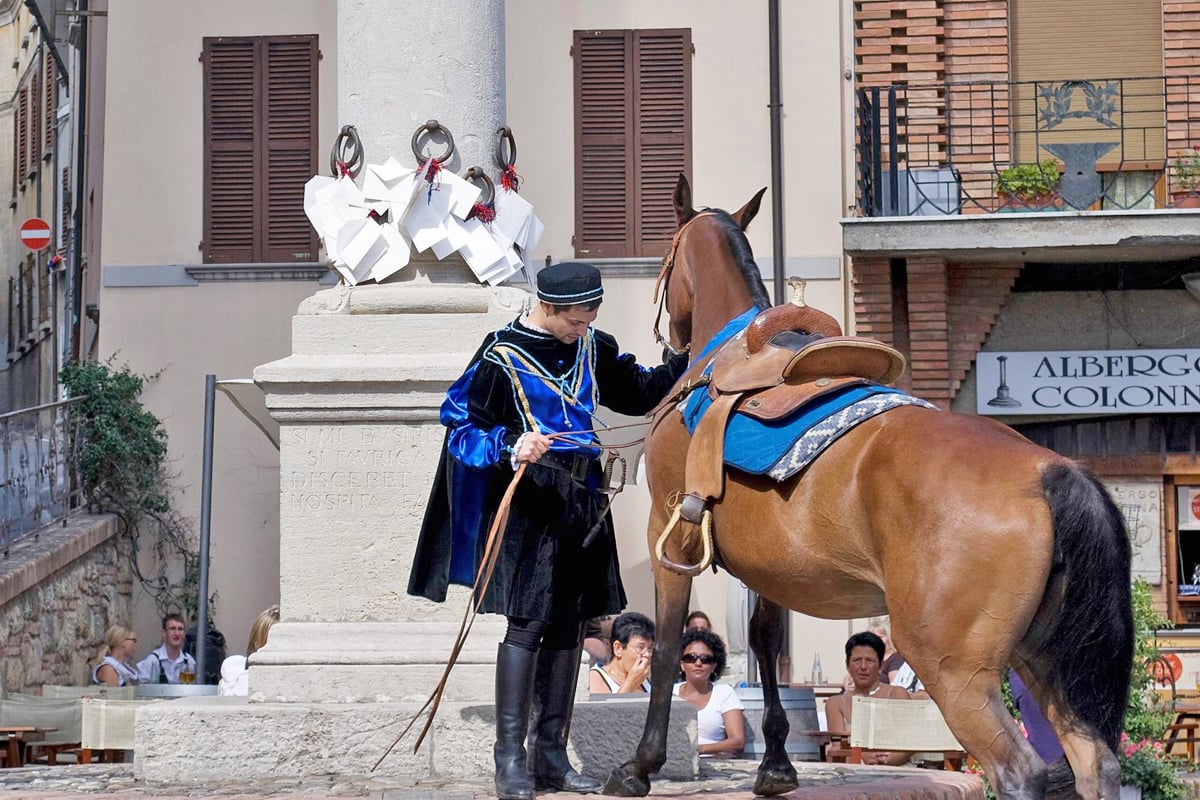
Hospitality Festival of Bertinoro (Bertinoro) | Photo @ visitbertinoro.it
In summer you’re spoilt for choice. Try Berti’n Jazz, the roving jam sessions in the old-town streets, and Berti’n Love on San Lorenzo’s night in the historic centre lit up specially by candles, lamps and lanterns.
The first Sunday in September is synonymous with the Festa dell’Ospitalità (the Hospitality Festival of Bertinoro), recalling a 13th-century tradition that began when the noble families of Bertinoro erected the Colonna delle Anella in the town square (see above).
In winter the Pomeriggi del Bicchiere is a series of events that leave the agreeable taste of good hospitality in the mouth. Ward off the winter chills with more than a few mouthfuls of moreish local food and wine in a convivial atmosphere punctuated by encounters with poets, authors and good music.
Every May, make a date with the most characteristic of all Romagnan white wine, at Albana Dèi. It’s an event for tasters of all levels of experience to taste wines galore and to help choose the best white of the year, in a festival of conviviality and traditional local foods.
Food and Wine
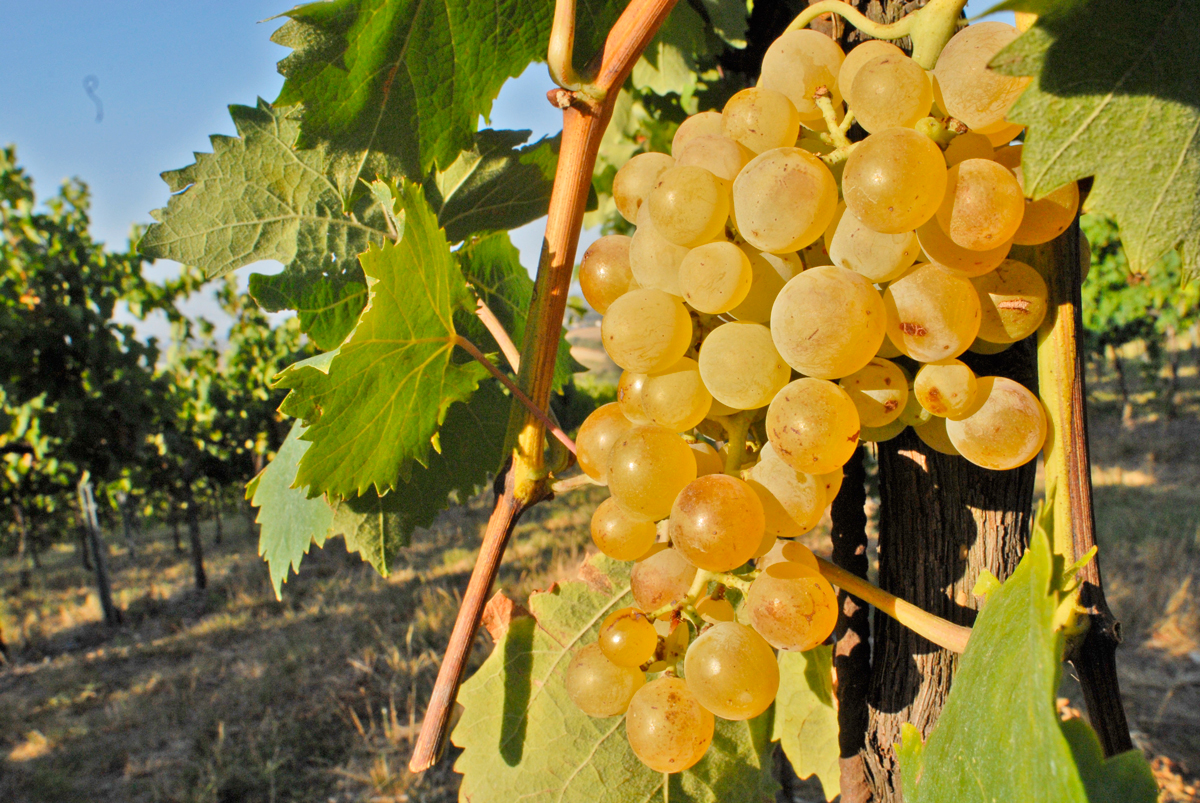
Albana di Romagna | Photo © Consorzio Vini di Romagna
Like every other Romagna village, Bertinoro has a whole host of rather special wines and food products. But the pièce de résistance is surely Albana, “Bertinoro gold”, a white DOCG wine made from the fruit of native Romagna vines.
Not forgetting the Sangiovese, of course, the powerhouse behind the king of wines – the Romagna Sangiovese DOC Riserva – or Pagadebit and Cagnina di Romagna, two very special local wines that have survived thanks to winegrowers’ determination to keep them alive. Other Bertinoro specialities include Saba, a grape syrup used to flavour drinks and foods and Savor, a home-made jam made at harvest time.
How to reach Bertinoro
Bertinoro is located on the hills between Forlì and Cesena, 3 km from the Via Emilia, east of the city of Forlimpopoli. It can be easily reached with any type of vehicle, both in the car and on the bus.
The [Emilia Romagna Villages] section is dedicated to Villages that are part of the Associations Borghi più belli d’Italia, Bandiere Arancioni del Touring Club & Borghi autentici d’Italia.
Author
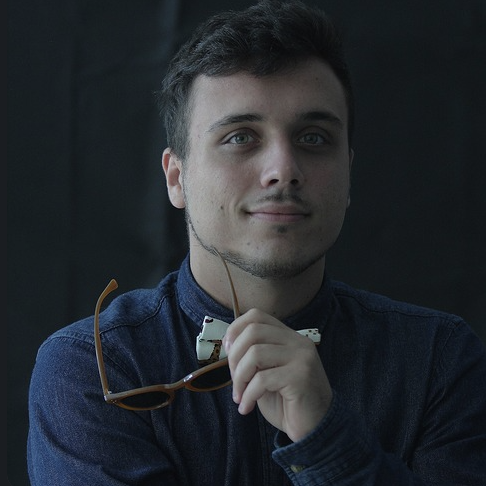
Arturo Castellini
I am a curious explorer from Emilia-Romagna and usually spend my time planning my next trip, searching for the most authentic traditions of the Italian hinterland.
You may also like
Five villages reachable by train in Emilia-Romagna
by Giulia Delaini /// April 12, 2018

Interested in our newsletter?
Every first of the month, an email (in Italian) with selected contents and upcoming events.
